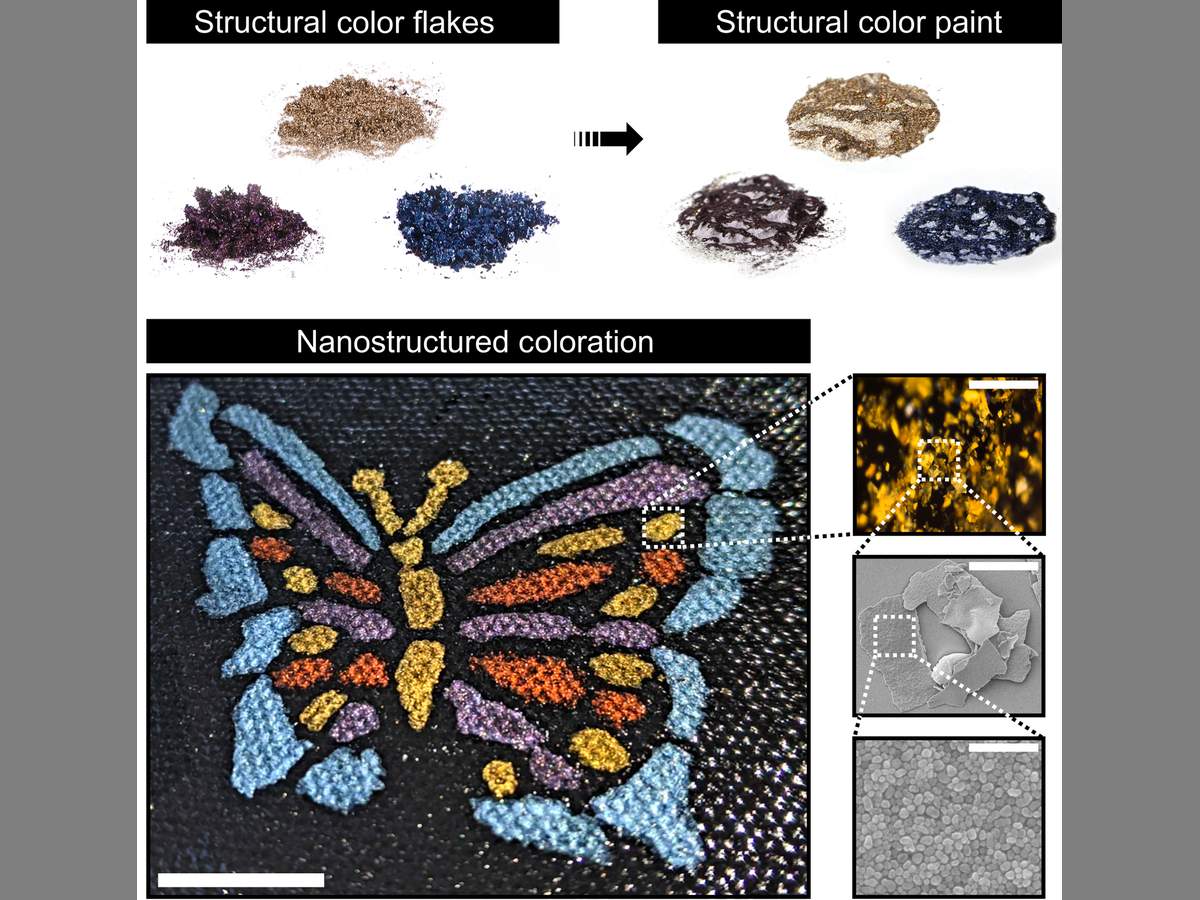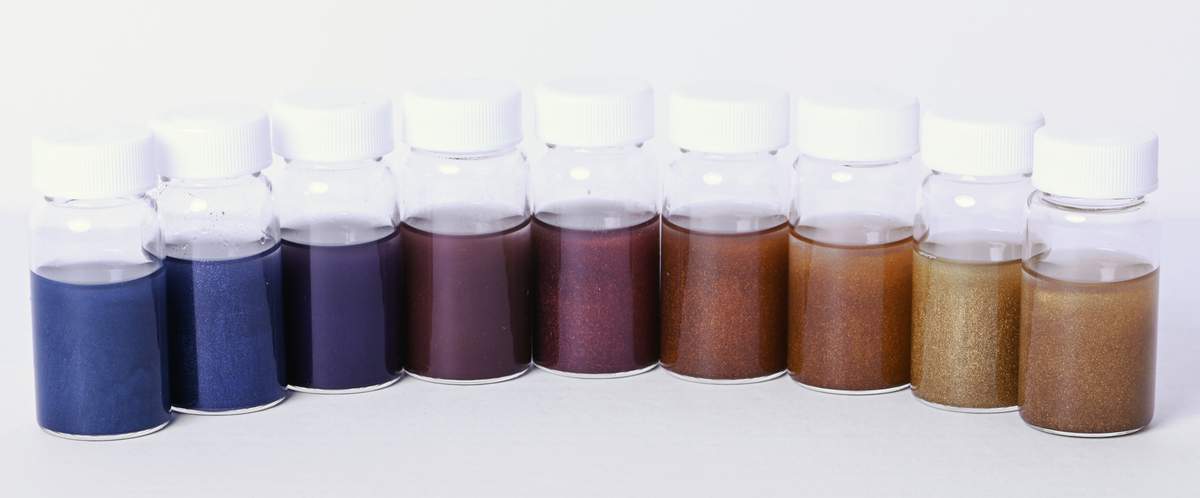Scientists at the University of Central Florida (UCF) have created a new kind of paint that’s super light and super tough. The colors in the new paint aren’t at all like those in most paints. Instead, they’re more like the colors on a butterfly’s wings.
The colors in most paints come from pigments – small amounts of colored stuff mixed into the paint. For hundreds of years, humans have been mixing different minerals, metals, or chemicals together to produce different colors of paint.
But nature has another way to create color, called “structural color”. Structural color comes from tiny shapes on the surfaces of things like wings, feathers, or shells. Normally, we never see the shapes that create these colors because they’re so tiny. Now scientists have used nanotechnology to make paint with structural color.

(Source: Courtesy University of Central Florida.)
Nanotechnology
Nanotechnology, or nanotech, is a scientific area that deals with making or changing things that are incredibly tiny. We’re used to measuring things using sizes like a meter (a little more than a yard). But nanotech is measured in nanometers – one billionth of a meter (0.000000001 meter). That’s extremely tiny.
Researchers at Dr. Debashis Chanda’s lab at UCF weren’t really planning on making paint. They were trying to create a special mirrored surface. But they found super-tiny clumps of aluminum atoms on the surface. The researchers were upset because these tiny clumps or “nano-islands” messed up the mirror.
Then they realized that the nano-islands made colors when light hit them. They decided to turn their discovery into paint.
All the color in the new paint comes from aluminum. There are tiny aluminum flakes and then even tinier nanoparticles that create the colors. The nanoparticles don’t really produce the color. They simply reflect back a single color. The size of the nanoparticles determines which color gets reflected.

(Source: Cencillo-Abad, et al. [CC BY-NC], via ScienceAdvances.)
Because the new paint doesn’t have pigments, the paint is extremely light. A little bit goes a long way. “A raisin’s worth of structural paint is enough to cover the front and back of a door,” Dr. Chanda says.
The paint is so light that it could reduce the amount of fuel used by planes and cars. Normally, it takes about 1,100 pounds (500 kilograms) of paint to cover a Boeing 747 airplane. It would only take three pounds (1.3 kilograms) of Dr. Chanda’s structural paint to do the same job.
American Airlines once figured that cutting 67 pounds (30.4 kilograms) from its flights could save 400,000 gallons (1,514,000 liters) of fuel every year. Structural paint could save over 16 times as much.

(Source: Cencillo-Abad, et al. [CC BY-NC], via ScienceAdvances.)
The new paint should last a long time. In regular paints, pigments break down and fade over time. That’s not true for structural color. “Once we paint something with structural color, it should stay for centuries,” says Dr. Chanda.
What’s more, the new paint doesn’t heat up like regular paint. That’s true even for darker colors. The new paint can keep surfaces up to 30º Fahrenheit (16.6º Celsius) cooler than normal paint. Using the paint on buildings in cities could help cool cities and reduce the electricity spent on air conditioning.
It will probably be a while before you start to see things painted with structural color. The scientists know how to make small amounts of the paint in the lab. Now they are trying to figure out how to make large amounts of the paint cheaply.
